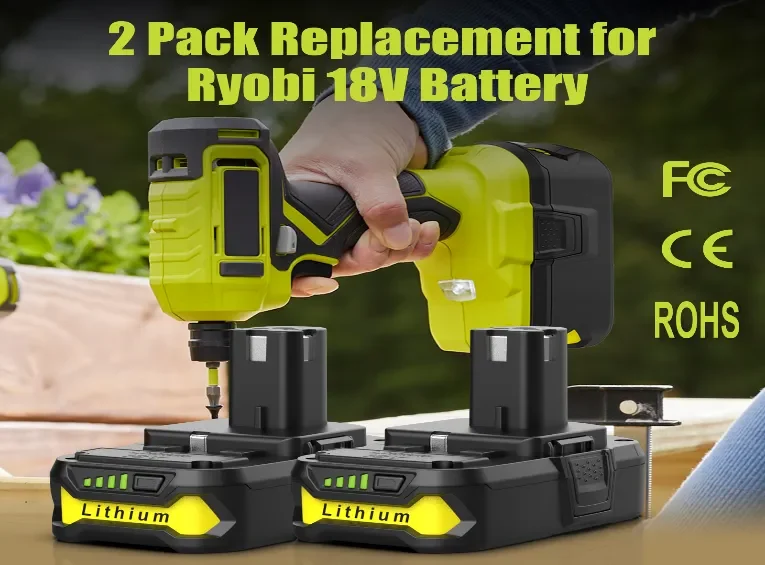Ryobi 18V Battery Maintenance and Care Tips
Maintaining your Ryobi One+ 18V batteries is essential to preserve capacity, ensure safety, and avoid premature replacements. Follow these six care pillars—enhanced with our interactive Runtime Calculator and tear-down video—to maximize performance and longevity.

1. Understand Ryobi One+ Cell Configuration
Before diving into routines, know what powers your packs:
- Cell Layout: Five 3.6V Li-Ion cells in series → 18V nominal
- Capacities: 1.5Ah, 2.0Ah, 4.0Ah, 5.0Ah options
- Built-In BMS: Over-charge/discharge, short-circuit, thermal protection
2. Clean Contacts & Ventilation
Dirty terminals and clogged vents lead to charging faults and heat buildup:
2.1 Battery & Tool Contact Cleaning
1. Power down and remove the pack.
2. Wipe terminals with a lint-free cloth and ≥ 70% isopropyl alcohol.
3. Allow to air-dry fully before reinsertion.
2.2 Vent Slot Maintenance
- Use a soft ESD-safe brush or compressed air to clear debris.
- Inspect quarterly for corrosion or blockages.
3. Optimal Charging Practices
Correct charging preserves chemistry and BMS integrity:
- Use Genuine Ryobi Chargers (P117/P118): Ensures proper CC/CV profile.
- Temperature Window: 5°C–40°C only.
- Remove at Full Charge: Prevent trickle-stress by unplugging at the green LED
4. Storage Best Practices
Proper storage avoids self-discharge lock-outs and chemical stress:
- State-of-Charge (SOC): 30%–50% for long-term shelving.
- Environment: 15°C–25°C, < 50% RH, away from direct sunlight.
- Rotation Protocol: Every 3–4 months, top up to mid-charge and rotate oldest packs into service.
5. Field Usage & Rotation
Even wear extends fleet lifespan:
- Rotation Schedule: Cycle through all batteries equally to balance cycle counts.
- Temperature Monitoring: Let packs cool between heavy-load intervals.
- Avoid Deep Discharge: Recharge before the 20% cutoff to minimize stress.
6. Inspection & Testing
Catch issues before they ground your tools:
6.1 Visual Inspection
- Check for cracks, bulges, moisture ingress, or loose shells.
6.2 Voltage & Load Test
- Open-Circuit Voltage: ~18 V expected.
- Load Sag Test: Apply ~1A; sag > 10 % indicates aging cells.
6.3 BMS Reset
- Perform one full discharge/charge cycle to recalibrate SoC reporting.
Interactive Runtime Calculator
Want to predict your pack’s runtime under real conditions?
FAQ
Q1: How often should I fully cycle my Ryobi battery?
A: Every 3–4 months to keep the BMS calibrated and capacity reporting accurate.
Q2: Can I store batteries in a cold garage?
A: Avoid below 5°C—cold storage leads to lithium plating and capacity loss.
Q3: What causes overheating during charging?
A: Blocked vents, ambient temps > 40°C, or a failing cell/BMS component.
Conclusion
By following the six care pillars—understanding, cleaning, charging, storage, rotation, and inspection—plus leveraging our interactive Runtime Calculator and tear-down video, you’ll keep your Ryobi 18V One+ batteries delivering peak performance for years.
👉 Explore XNJTG for genuine Ryobi batteries, chargers, and maintenance accessories designed for professional-grade care!